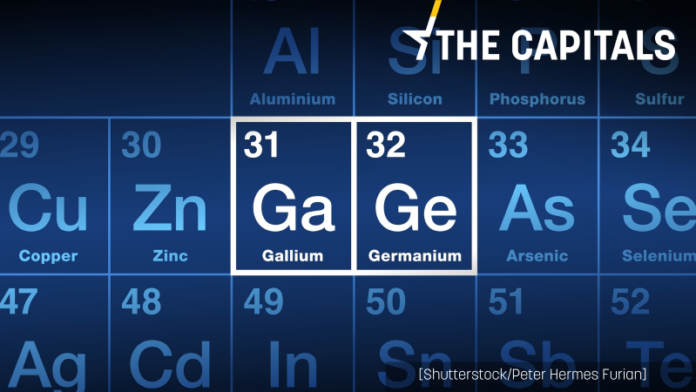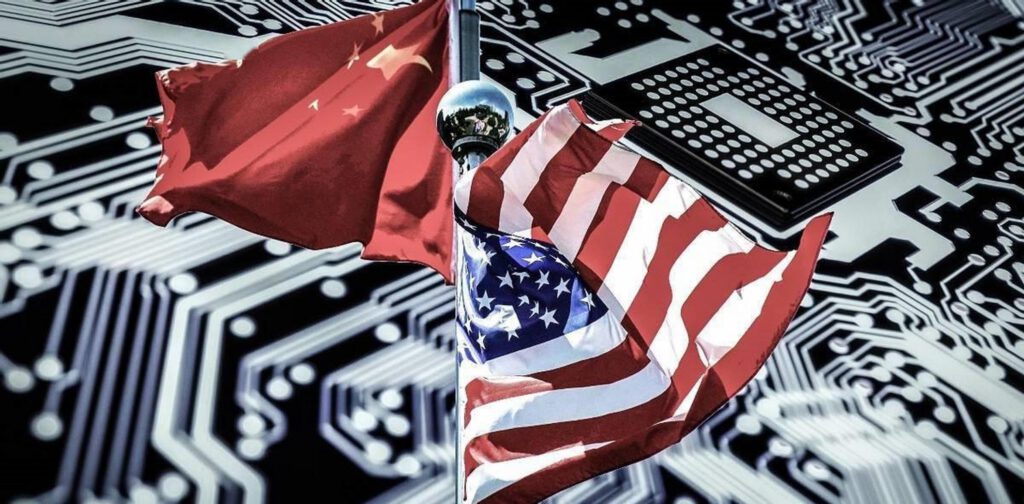
To safeguard national security and interests, on July 3, the relevant Chinese authorities issued a notice deciding to impose export controls on two key metals, gallium and germanium, starting from August 1. Exporters will be required to apply to the Ministry of Commerce for a license to export the relevant items.
Why gallium and germanium?
A report published in 2020 by the Chinese Academy of Geological Sciences, Institute of Mineral Resources shows that as early as during the Second World War, gallium was considered a strategic and critical metal. The current total world reserves of gallium is about 230,000 tons, and China’s gallium metal reserves ranked first in the world, accounting for about 80%-85% of the world’s total reserves.
Regarding the specific gallium export control, gallium arsenide is a representative of the second generation of semiconductor materials, having a major position in the development of high frequency, high speed, high temperature, and anti-irradiation microelectronic devices.
Semi-insulated gallium arsenide materials can be mainly used for radar, satellite television broadcasting, microwave and millimeter-wave communications, wireless communications and optical fiber communications and other fields.

Gallium nitride, as a typical third-generation semiconductor material, is the world’s most advanced semiconductor material as it is the core material and basic device of the emerging semiconductor optoelectronic industry, having a great application prospect in the areas of fast charging of cell phones, 5G communication, power supply, new energy vehicles, LED and radar.
China is the largest producer of gallium metal, mainly supplying developed economies such as the United States, the European Union, Japan, and South Korea.
Germanium as another key metal is included in the strategic reserve materials by many countries as an important strategic resource. The metal is often used in infrared optics, fiber optics, solar cells, polymerization catalysts and medicine, and other high-tech fields. The future has extremely important potential value in chips, solar cells, biotechnology, and weapons manufacturing.
According to 2016 statistical data released by the U.S. Geological Survey, the globally proven germanium retained reserves of only 8,600 metal tons, mainly distributed in the United States, China, and Russia. Among them, the United States accounts for 45% of the world, followed by China, which accounts for 41% of the global germanium reserves.
China’s germanium output mainly comes from lignite mines, which are convenient to mine, and therefore ranks first in global germanium production, supplying 68.5% of the world’s germanium cumulatively over the past decade. Although the United States is the world’s largest germanium resource reserve, since 1984, germanium as a national defense reserve resource for protection, especially in recent years has no longer germanium mining.
Why tighten export controls on such minerals?
On July 4 at China’s foreign ministry regular press conference, a Japanese reporter asked, considering the importance of gallium and germanium in the semiconductor industry, whether China uses export control to counterattack the United States, Japan, and the Netherlands. In this regard, the spokesman for China’s Ministry of Foreign Affairs responded that the Chinese government, in accordance with the law on the implementation of export control of relevant items, is a common international practice, and does not target any particular country.

Despite the differences in data from different units of caliber, China’s share of products supplied to the world has long been higher than its own share of the world’s reserves. For example, according to the U.S. Geological Survey, China’s gallium reserves account for about 68% of the world, but in terms of production, China’s gallium production accounted for more than 90% of the global share of gallium production. Then look at germanium, the world’s proven germanium reserves of only 8,600 tons, the United States, China has 45% and 41% respectively, but in the past 10 years, China has accumulated 68.5% of the world’s supply of germanium.
“China’s export controls on gallium and germanium-related items are sensible, reasonable and legal.” Bai Ming, a member of China’s Academic Degree Committee of the Research Institute of the Ministry of Commerce, pointed out that there are two possibilities for the control measure: “export license” and “export disallowance”, and “As long as the use is reasonable, there is no need to worry about anything. Managing the export of these important materials is a responsible expression of China’s commitment to the world, and does not affect China’s efforts to maintain the normal operation of the international industrial chain.”
It is worth noting that tightening export controls on key mineral resources is a common practice in many countries. According to the Wall Street Journal, in terms of total value, about 10 percent of the world’s key mineral resources are currently facing at least one export restriction; between the beginning of 2009 and the end of 2020, the number of export controls on global industrial raw materials increased from 3,337 to 18,263. In the past two years, the United States, Canada, the European Union, Indonesia, Zimbabwe and other countries have introduced a succession of initiatives to restrict the export of key minerals.
China’s export controls could be a reciprocal countermeasure
Key mineral resources have become a new battlefield for big countries in the complex geopolitical environment due to their significance in the development of strategic emerging industries.
In recent years, Western countries such as Europe, the United States and Japan have formulated strategies and continuously released and improved catalogs of strategic mineral resources to safeguard strategic security in the fields of cutting-edge high-tech. It is inevitable and natural that the competition between China, the United States and Europe on key minerals related to industrial development and great power competition.
Globally, the US Biden administration has been formulating a consistent policy of pulling allies together to suppress China, and through the signing of the Energy Resources Governance Initiative (ERGI) and the Mineral Security Partnership (MSP), it is planning supply chain and industrial chain alliances with attempt to decouple from China and break the chain, and stagnate the process of globalization.
Now, in the key metal downstream semiconductor industry, the United States on China’s suppression is intensifying, the United States continue to pull together to coerce allies to form a common front. Japan announced at the end of May, 23 kinds of semiconductor equipment and materials will be officially applied for export restrictions from July 23. The Netherlands, the world’s largest producer of photolithography machines, announced on June 30 that it would further tighten its photolithography export policy, and that high-end DUV photolithography machines would be restricted from September 1 onward for export to China.
As many rare key metals in the international market are supplied by China to the outside world without restrictions for a long period, it is unfair for China to be restricted by its clients. Therefore, considering the implementation of export controls on two metal-related items as a reciprocal countermeasures is understandable, but it is more meaningful to highlight its importance to safeguard China’s national security and interests of a practice.
(Source: Xinhua, Global Times, EURACTIV)



